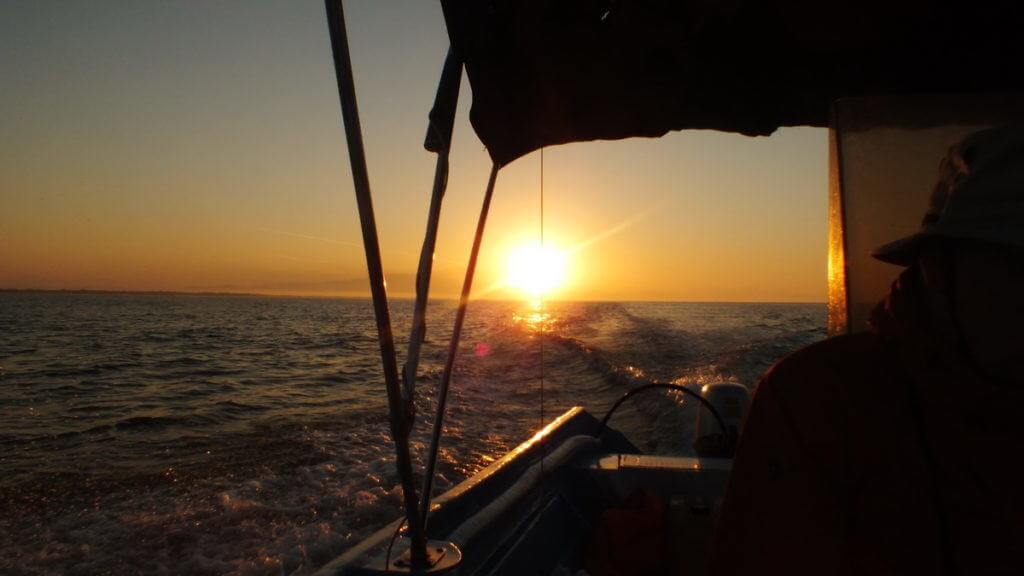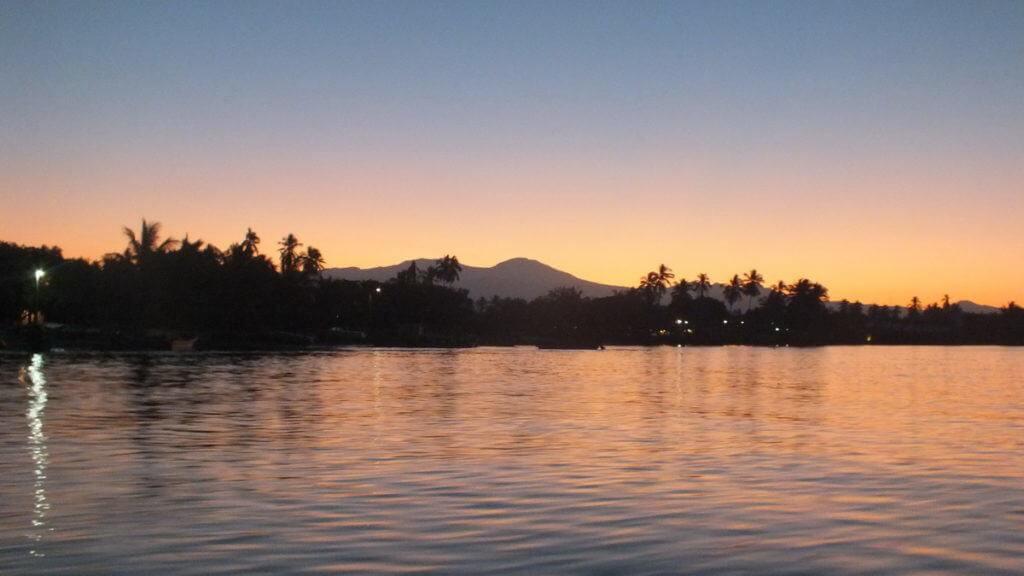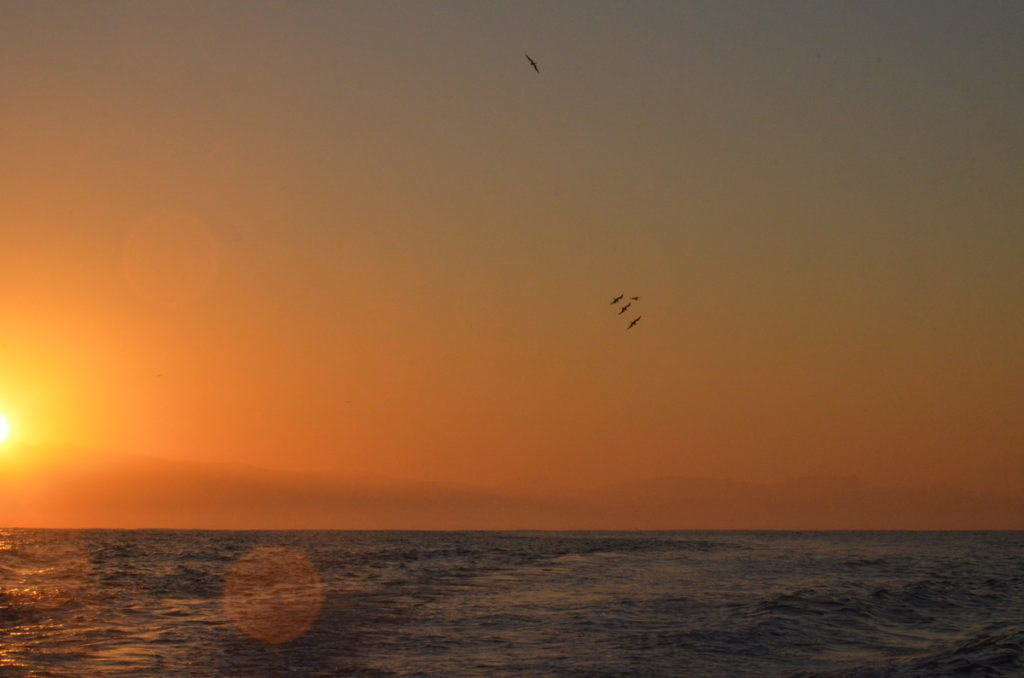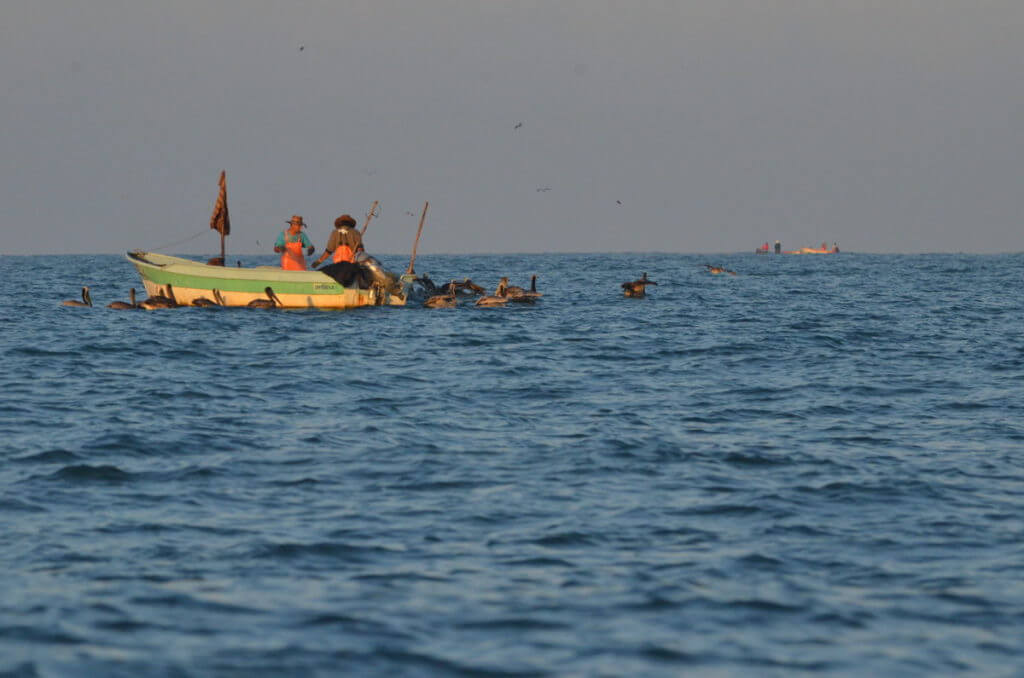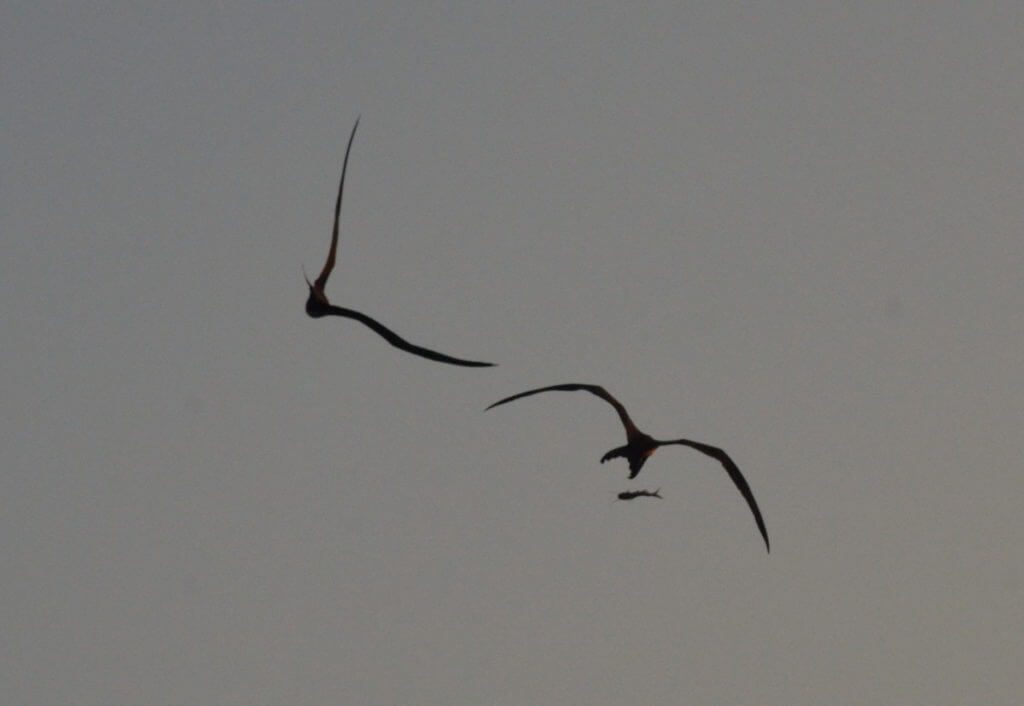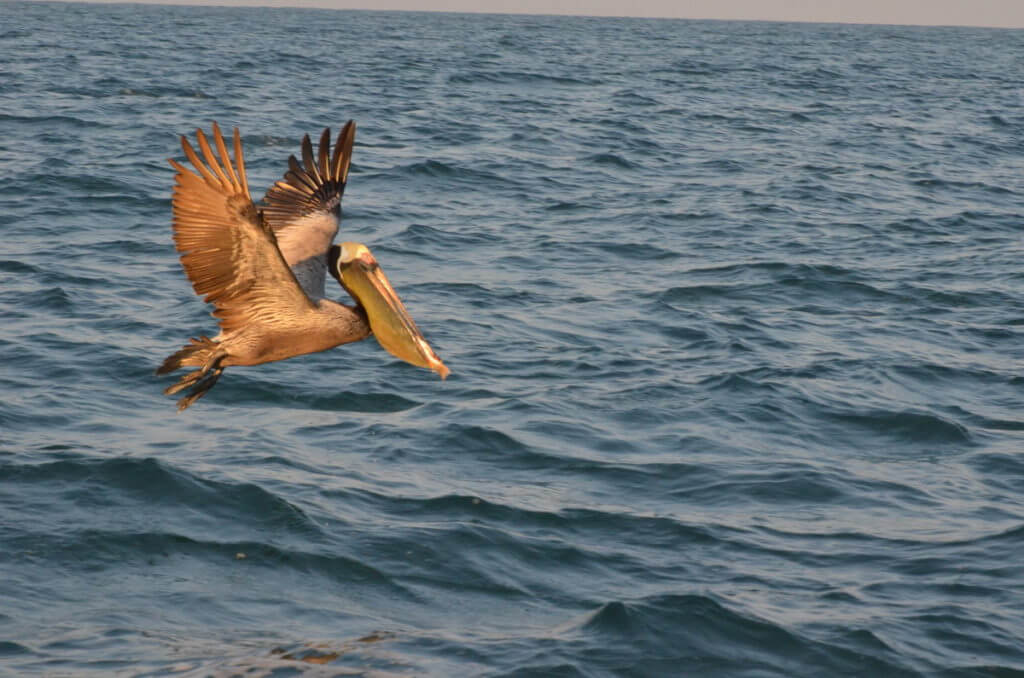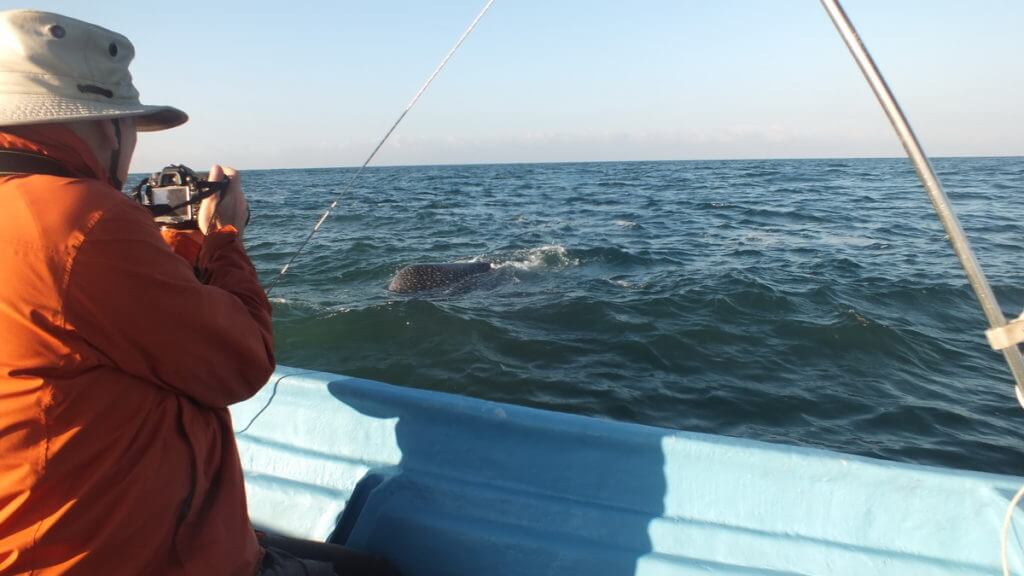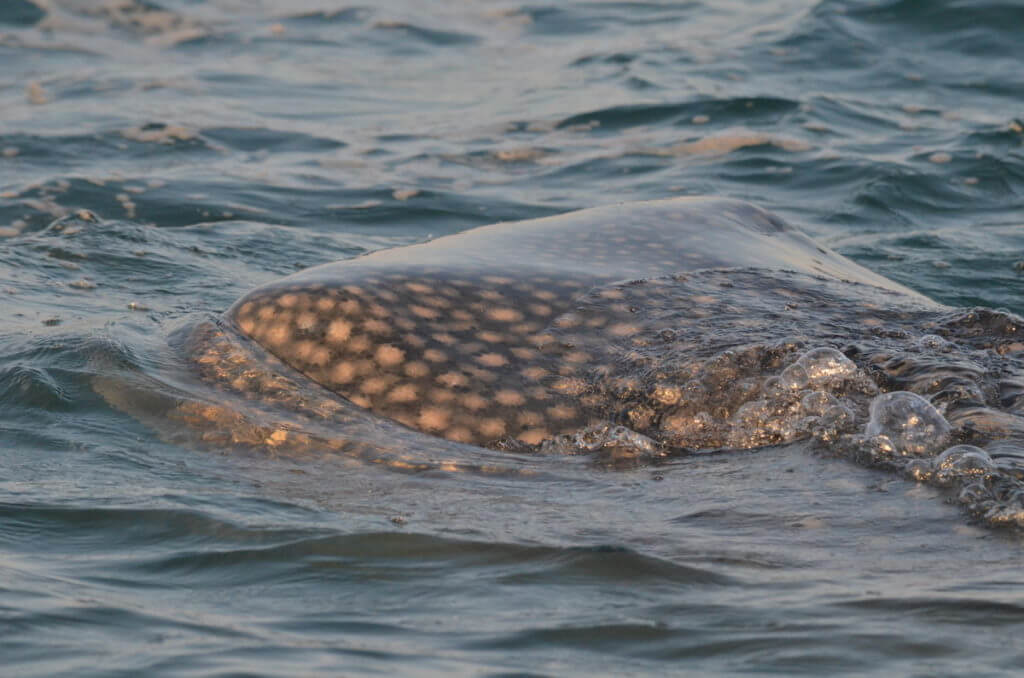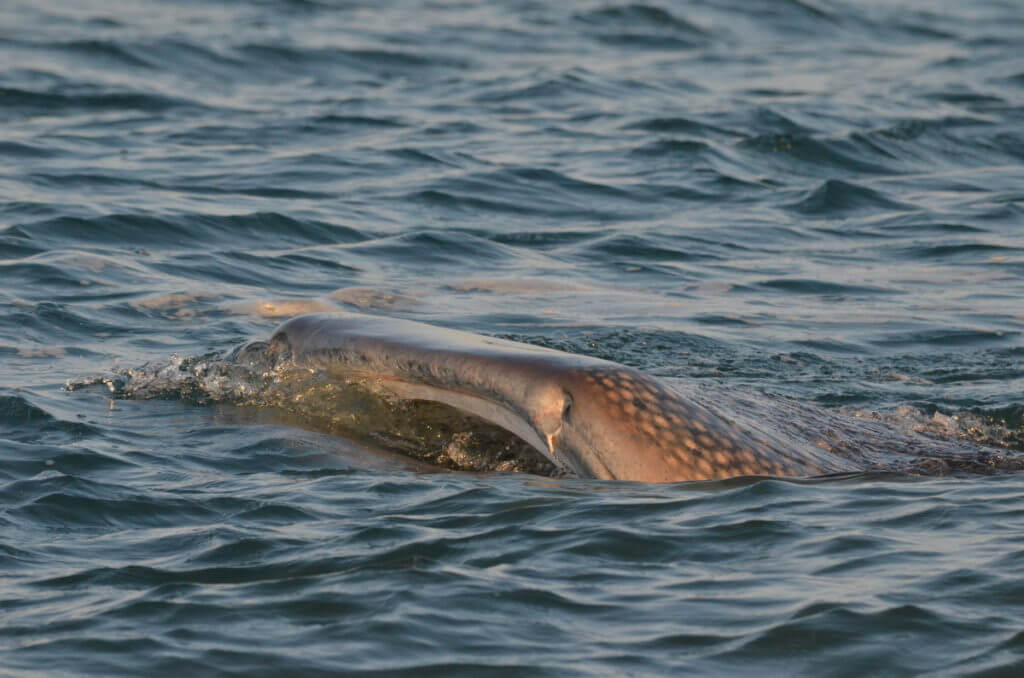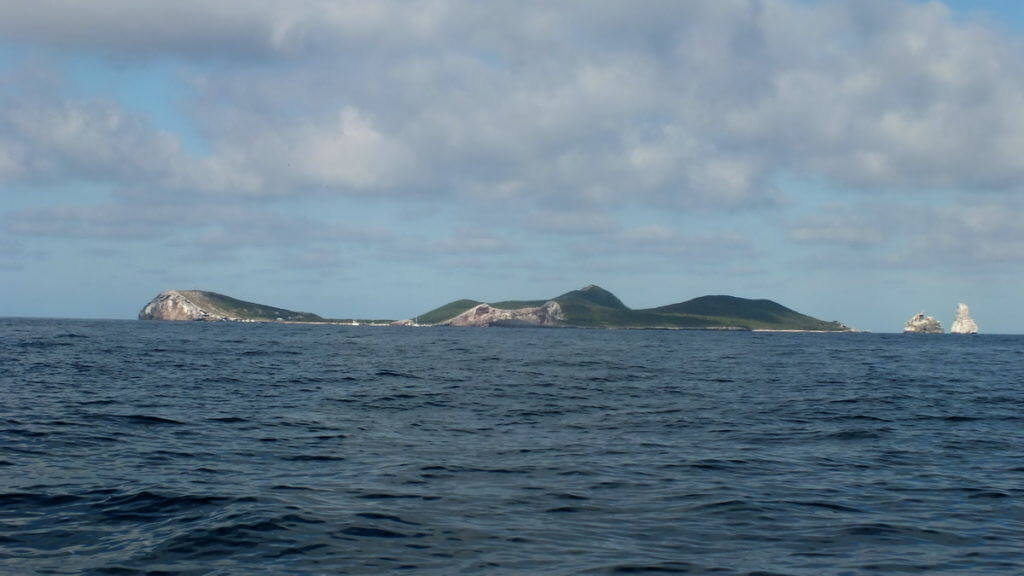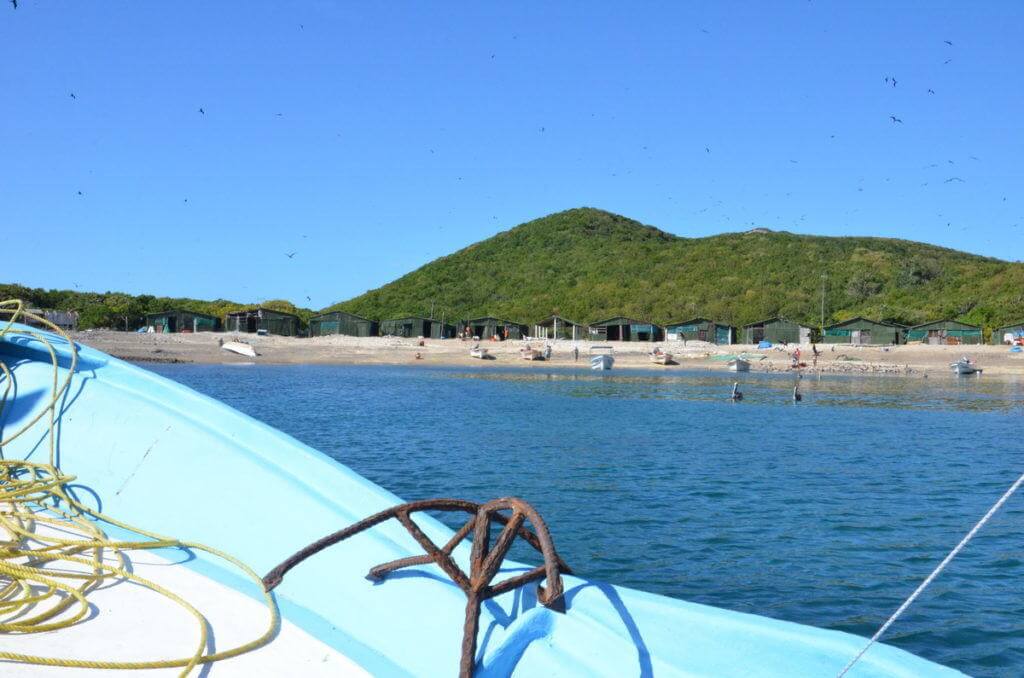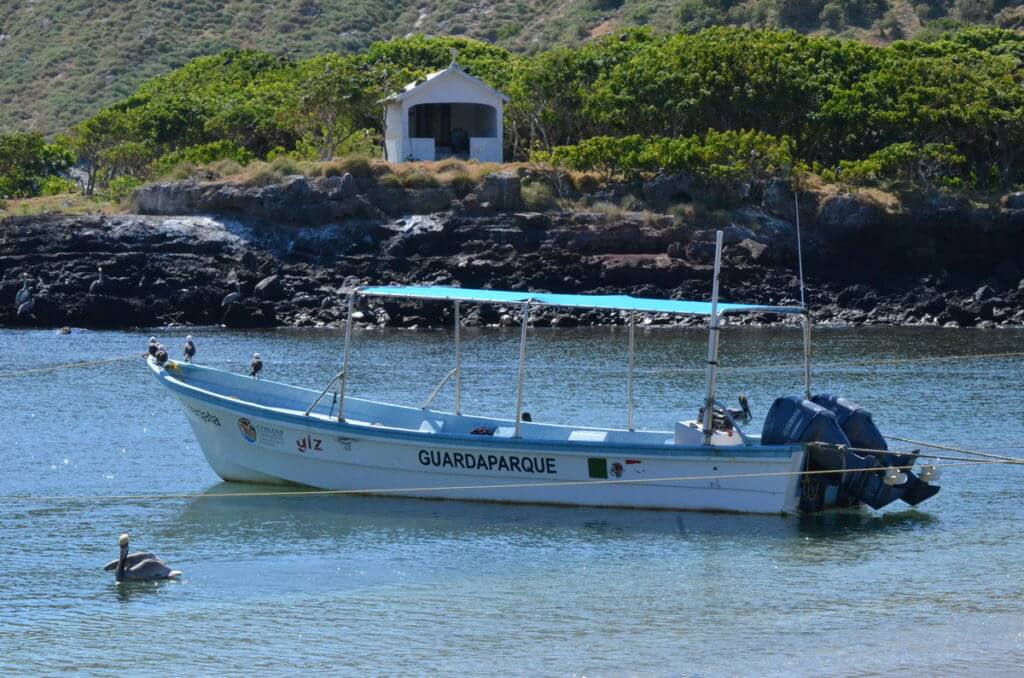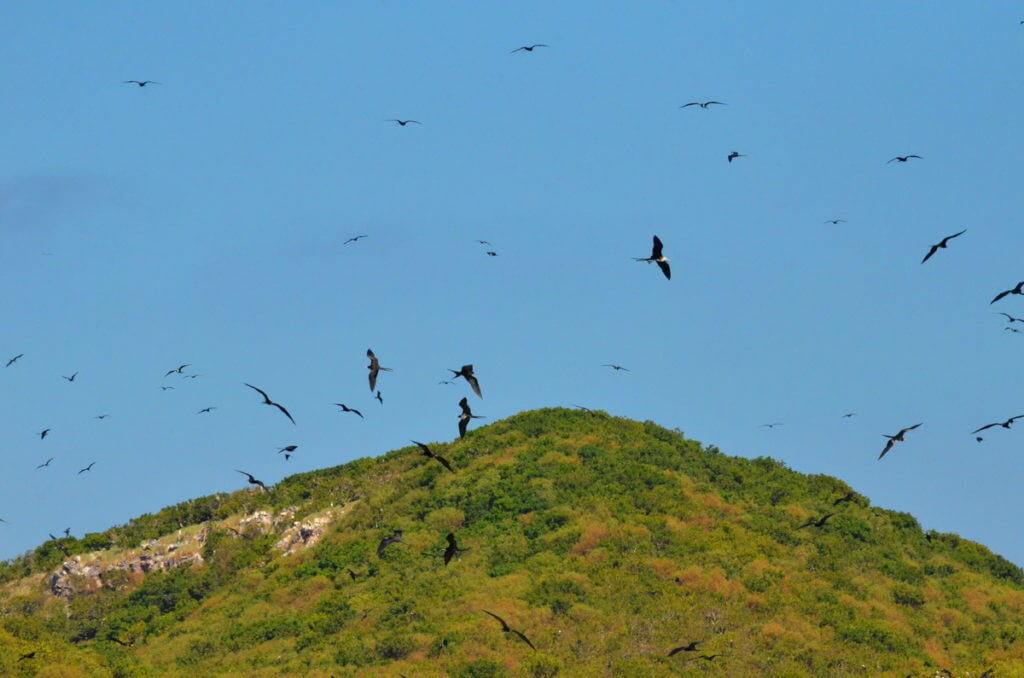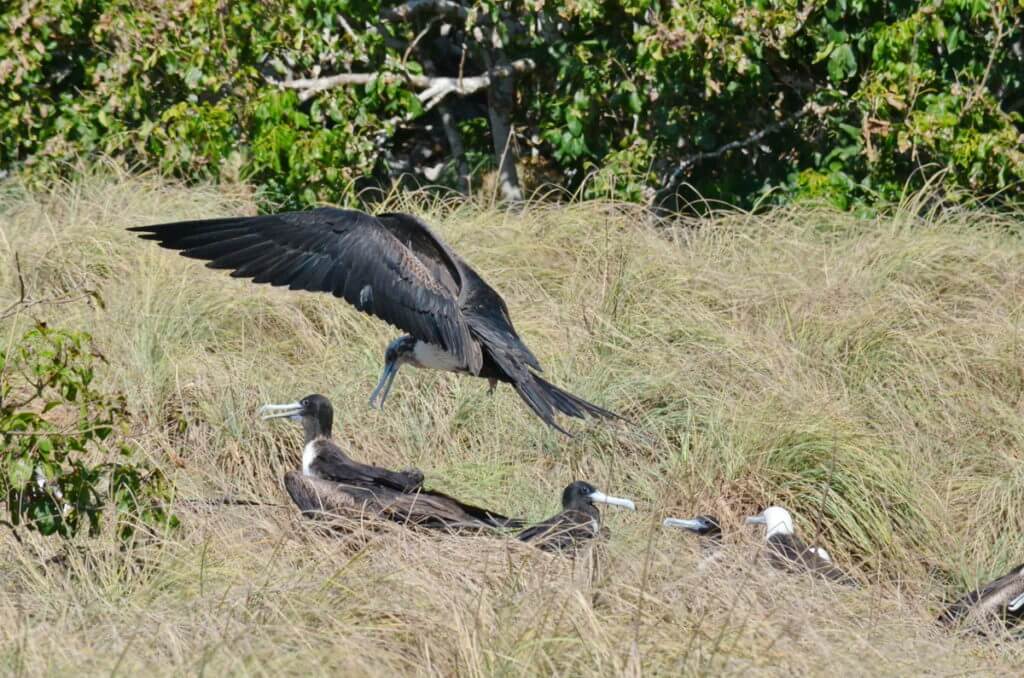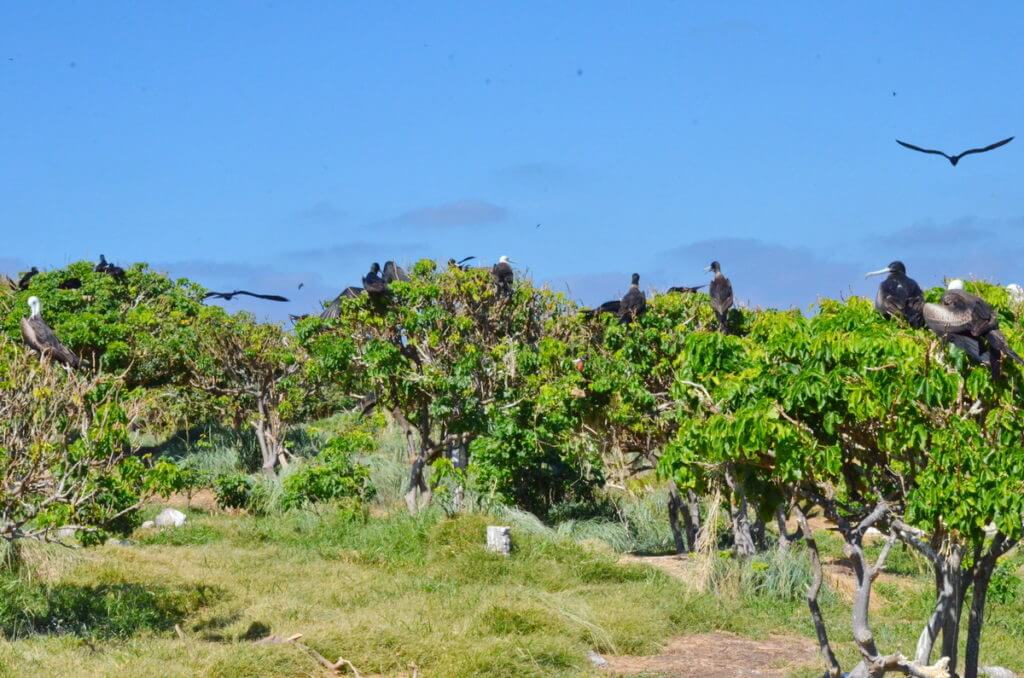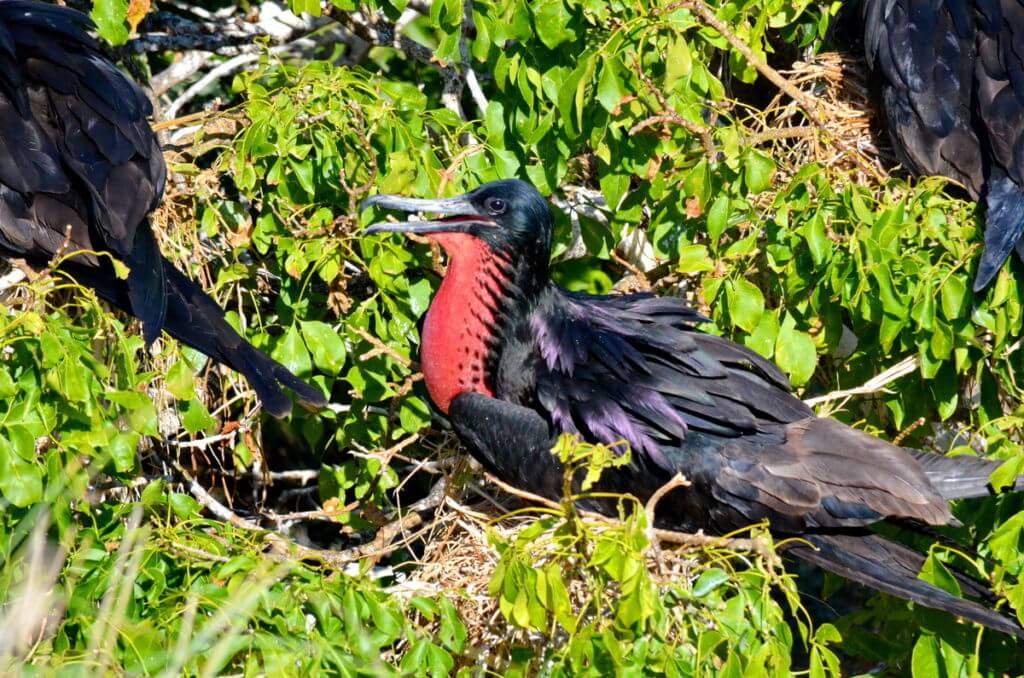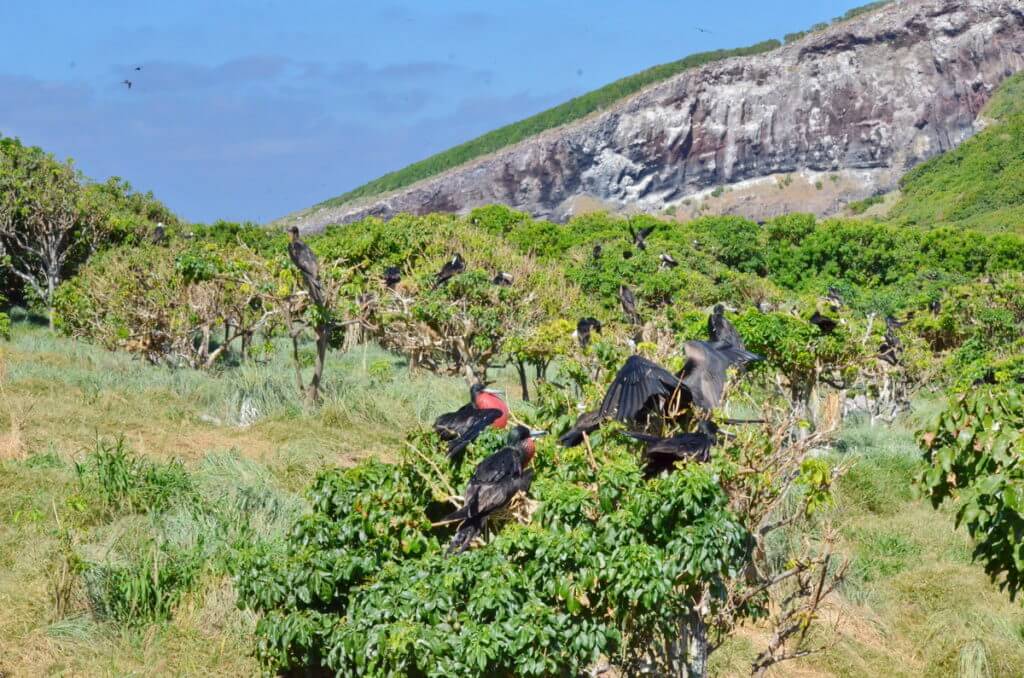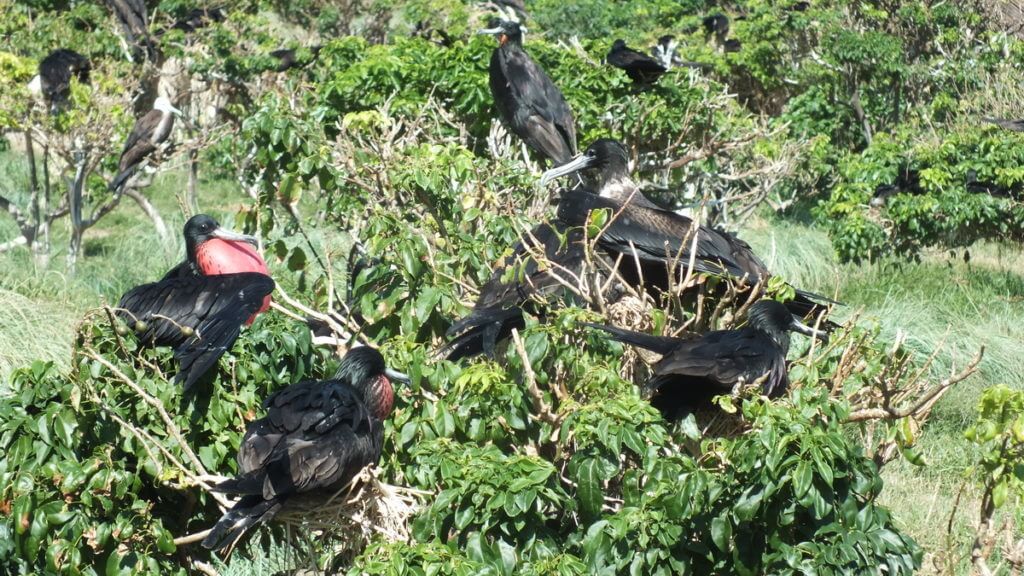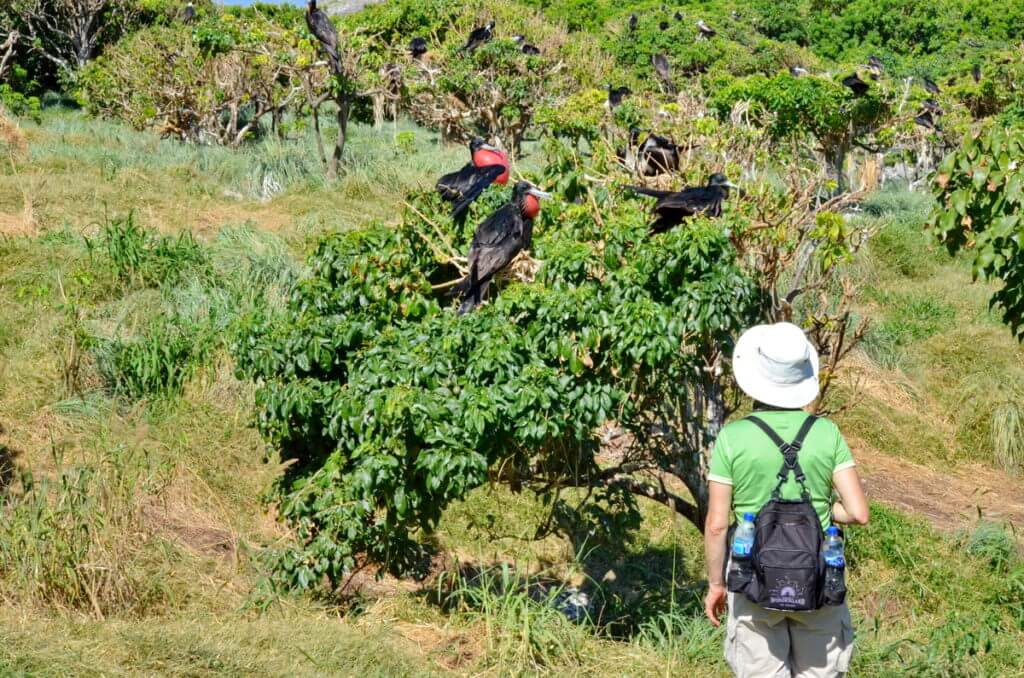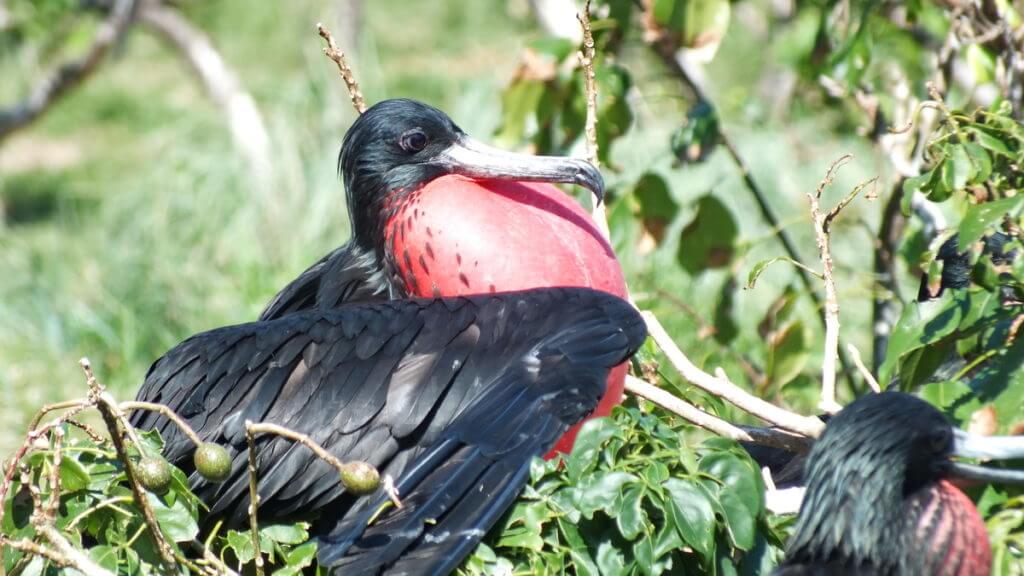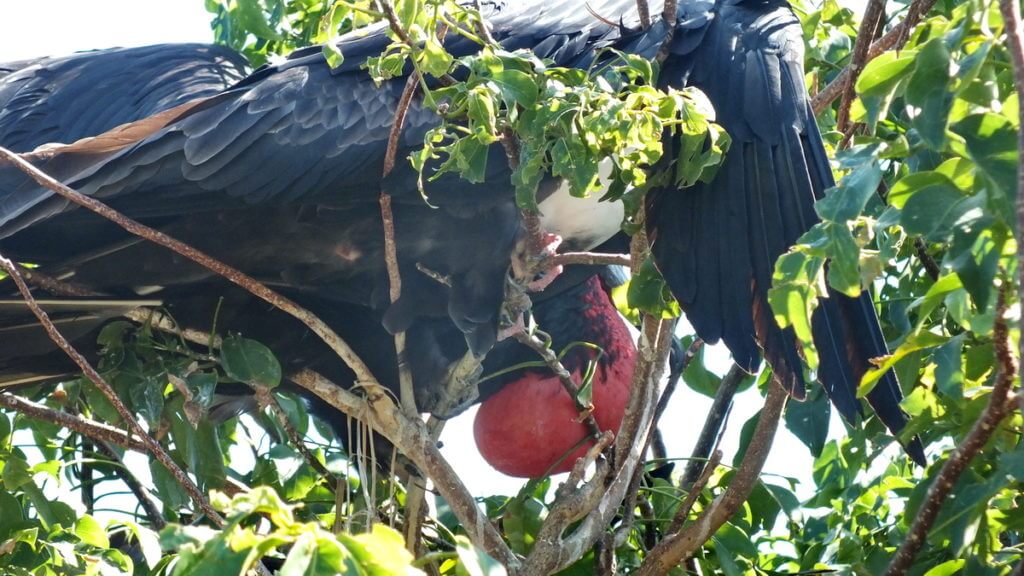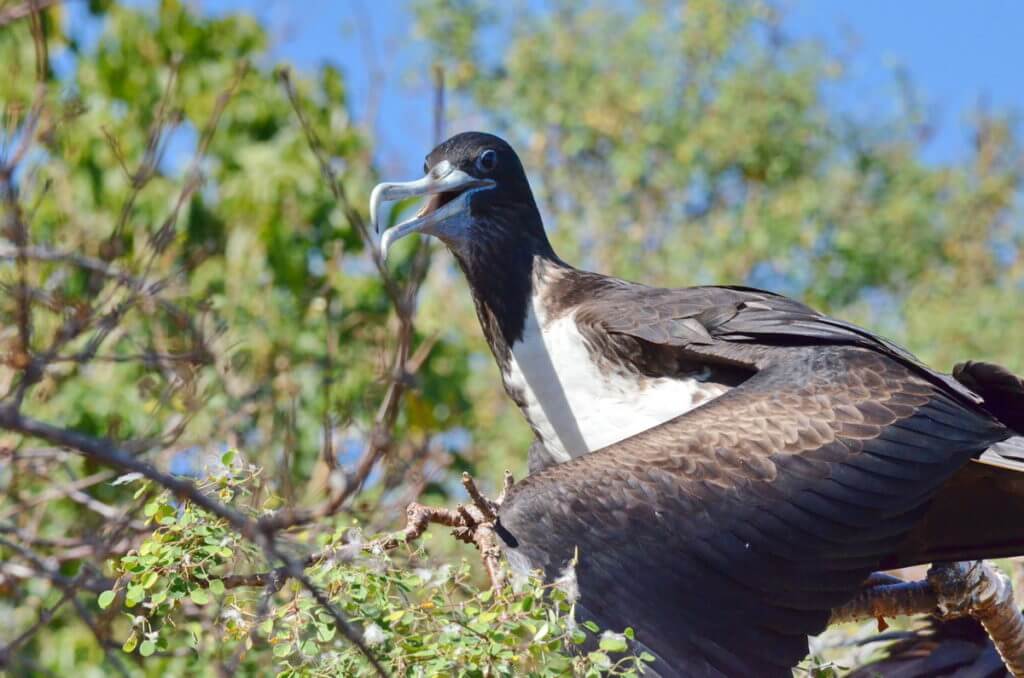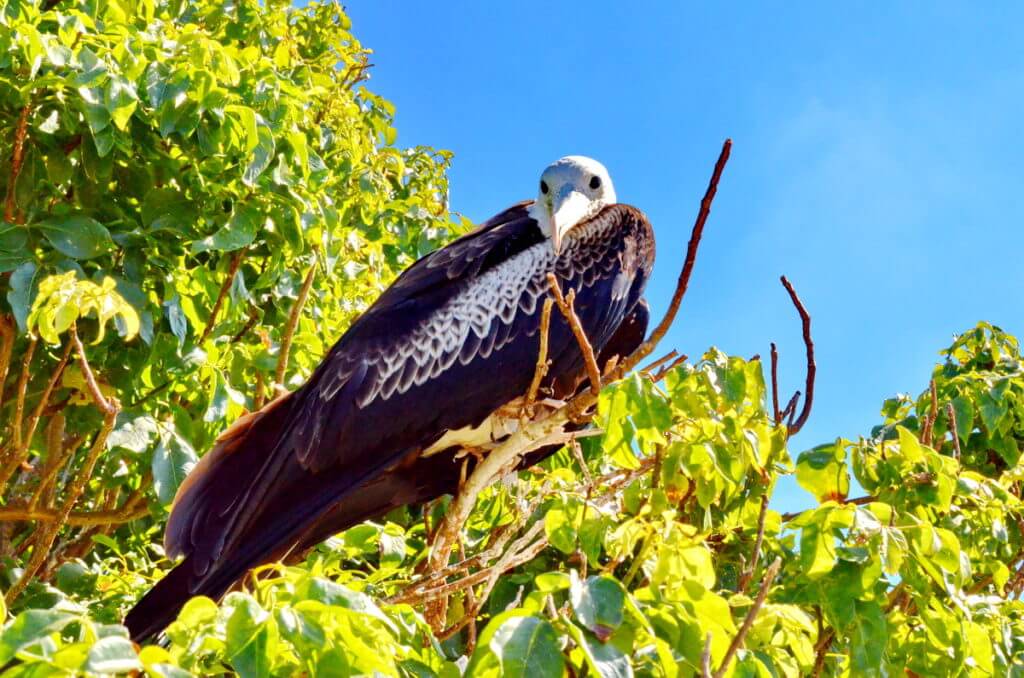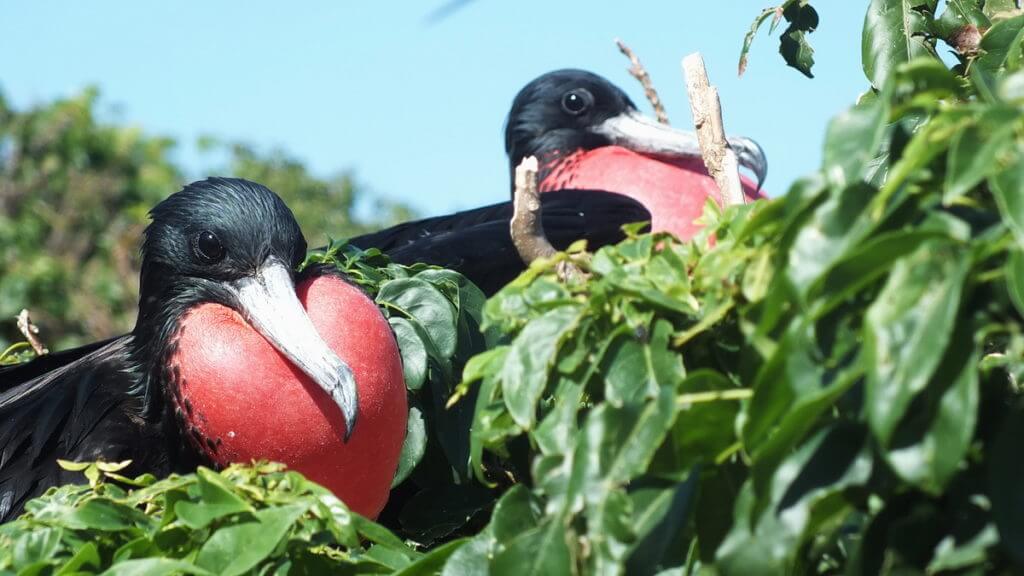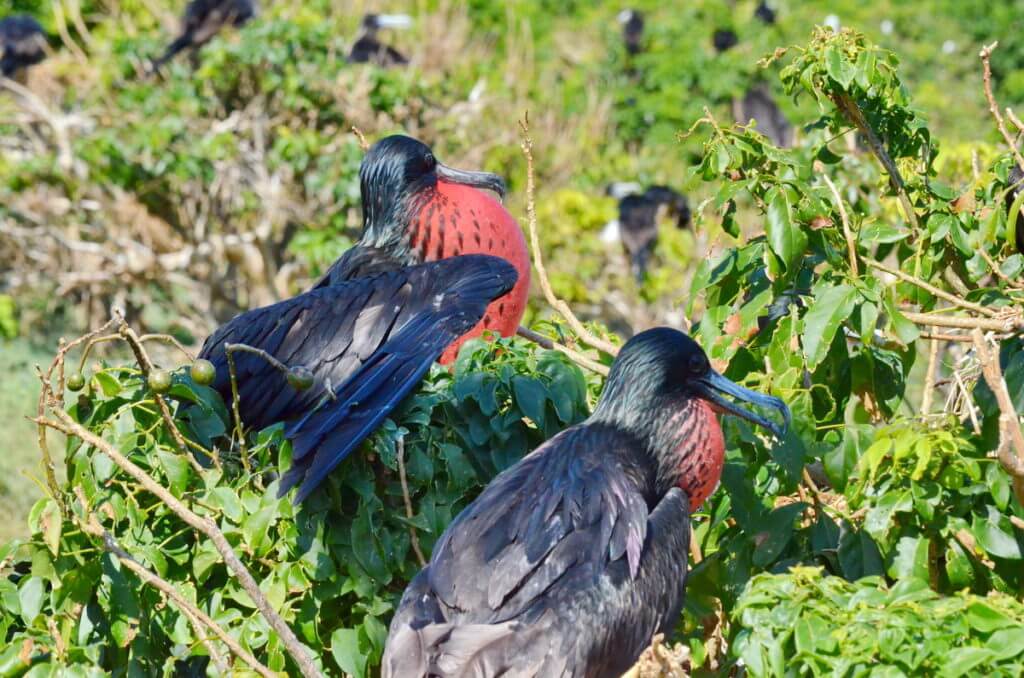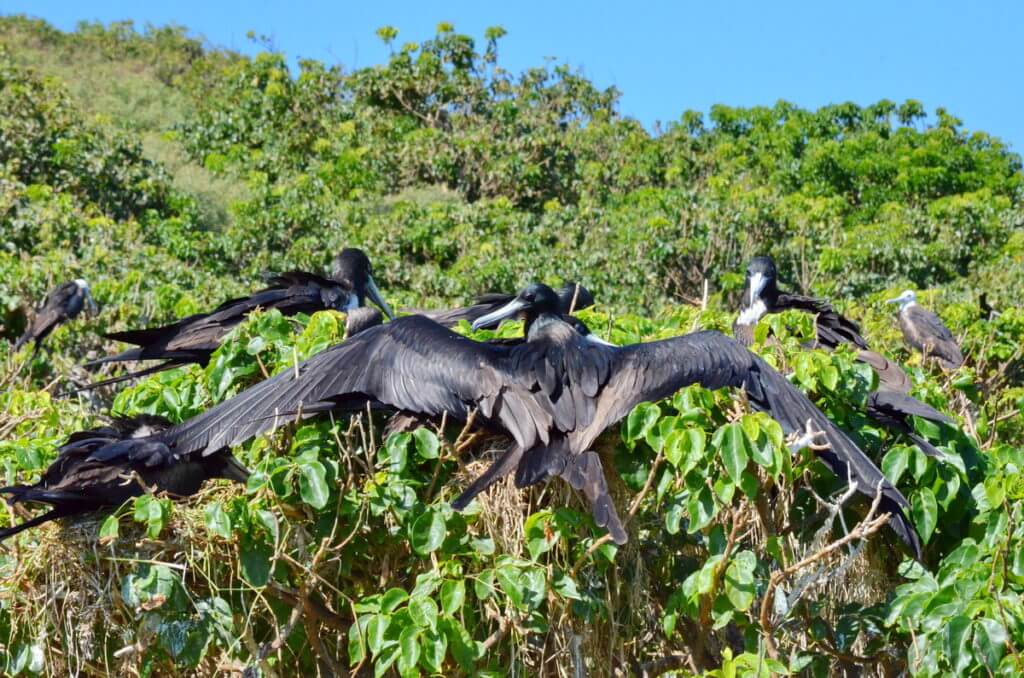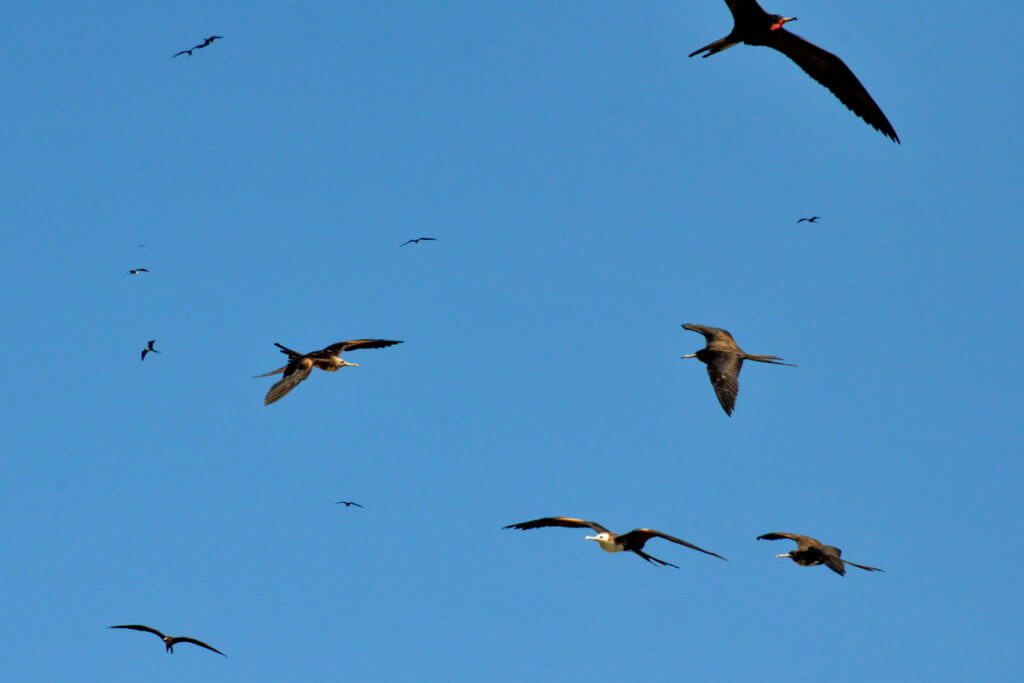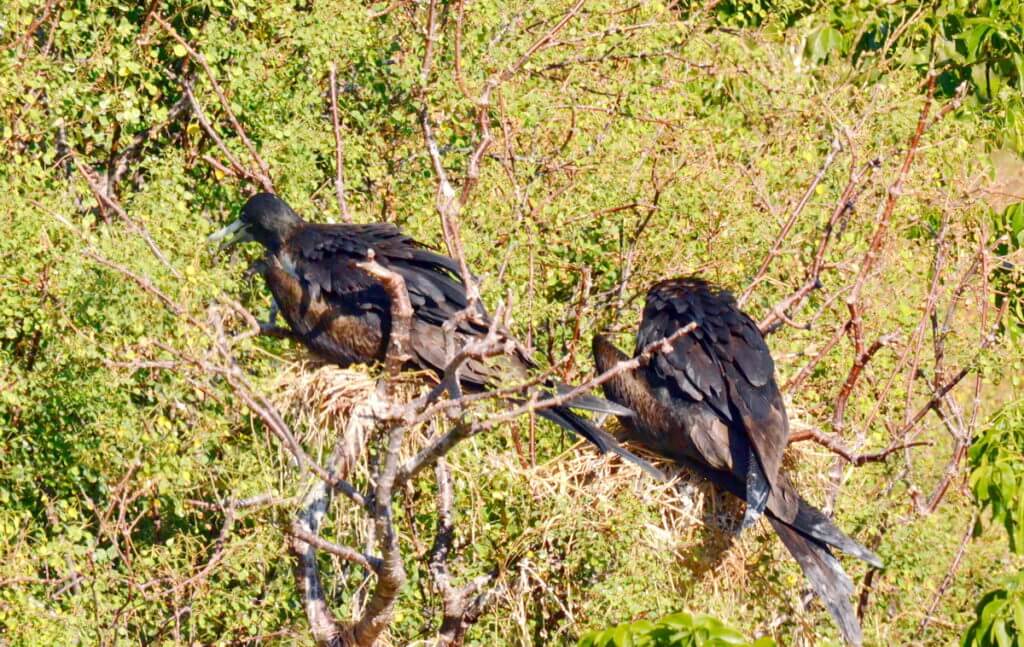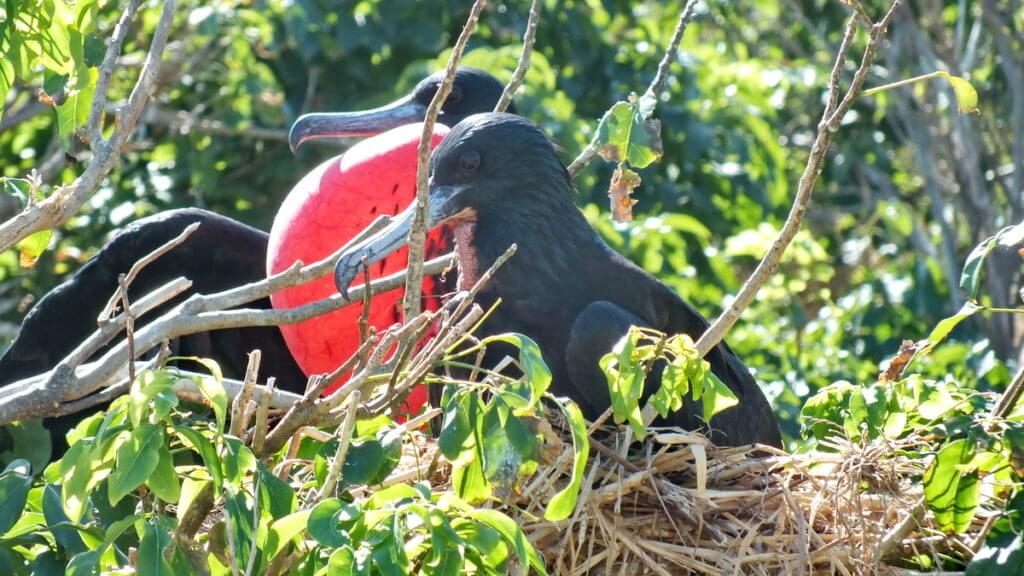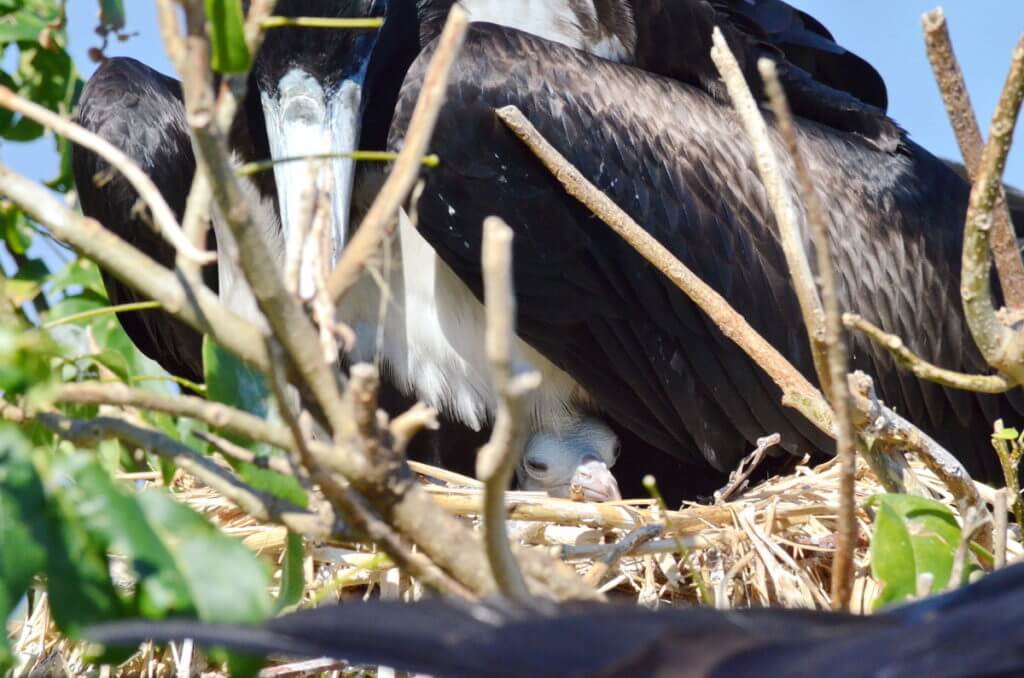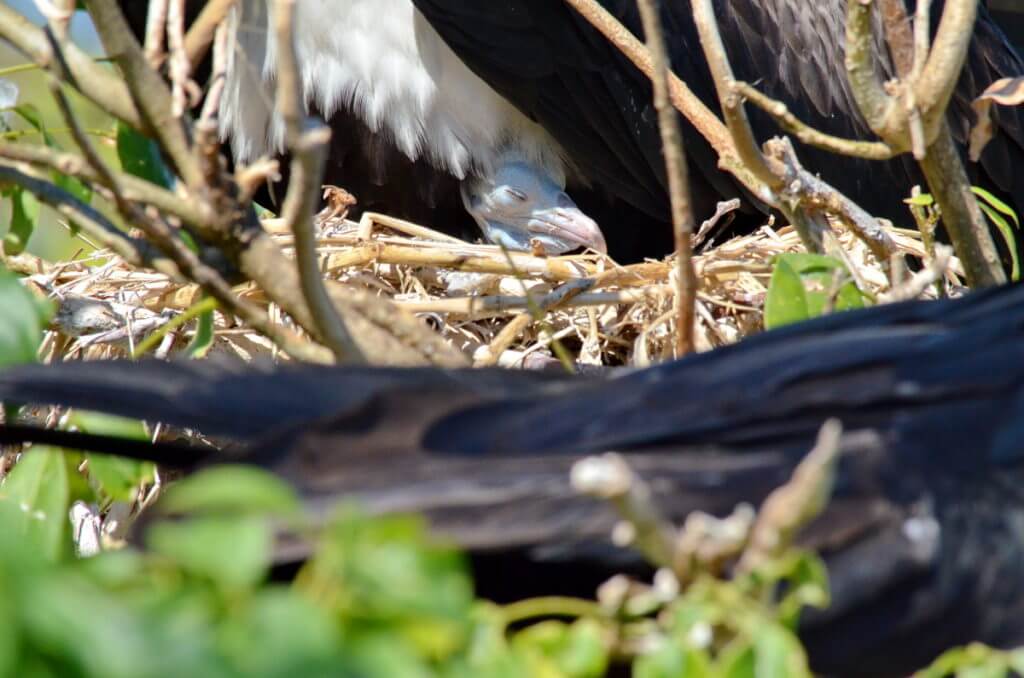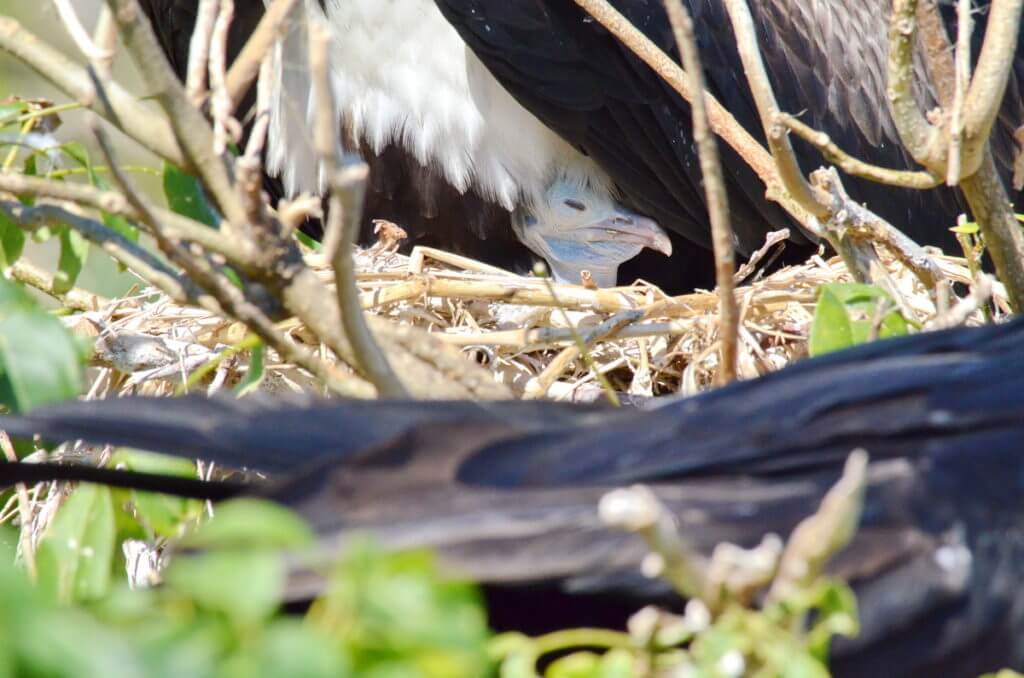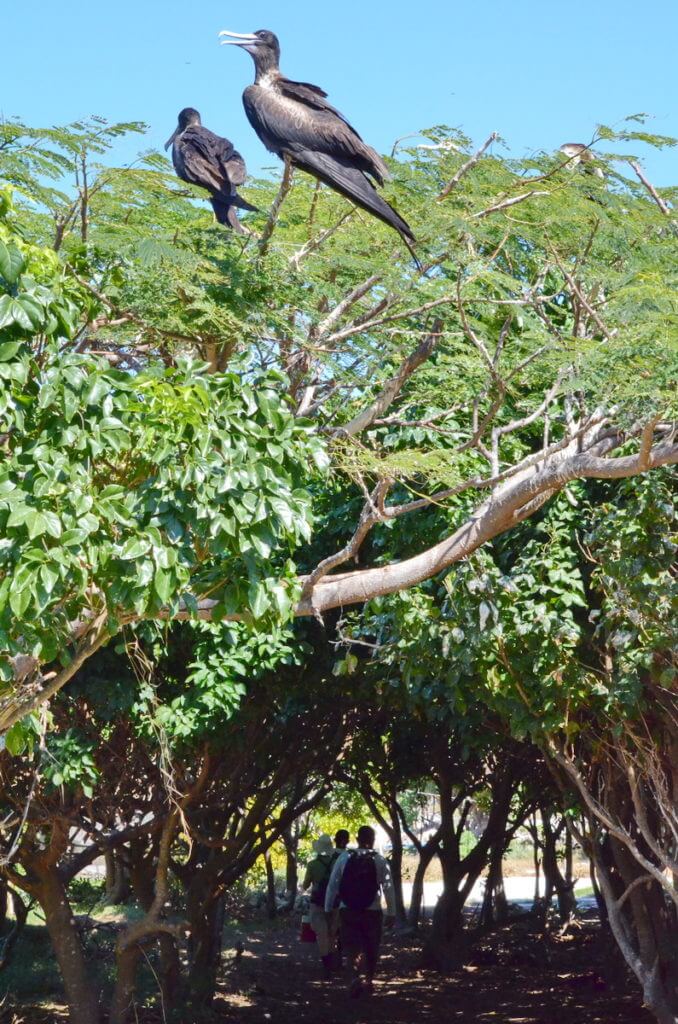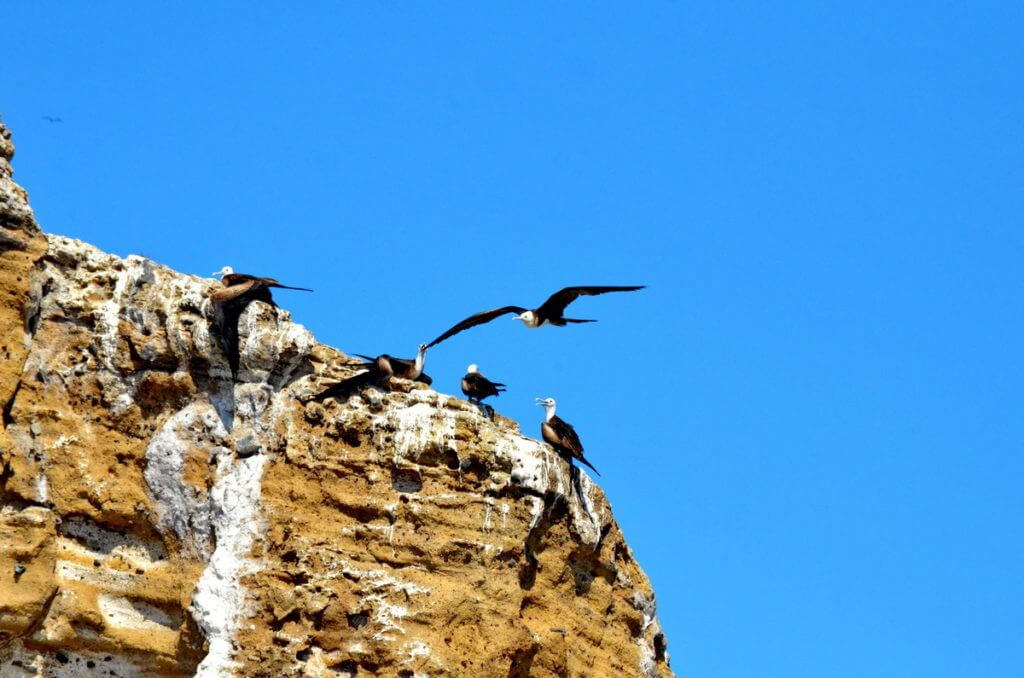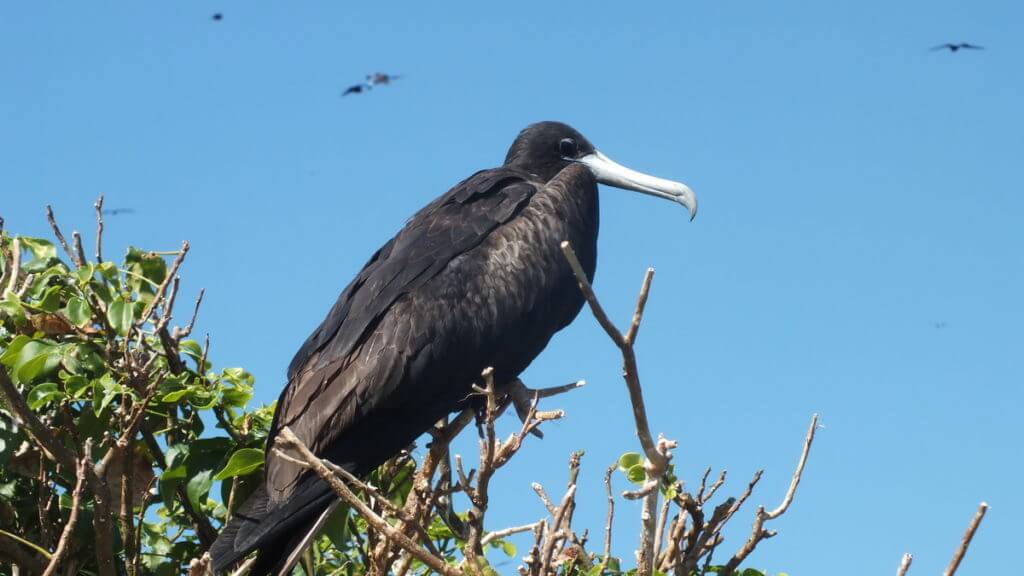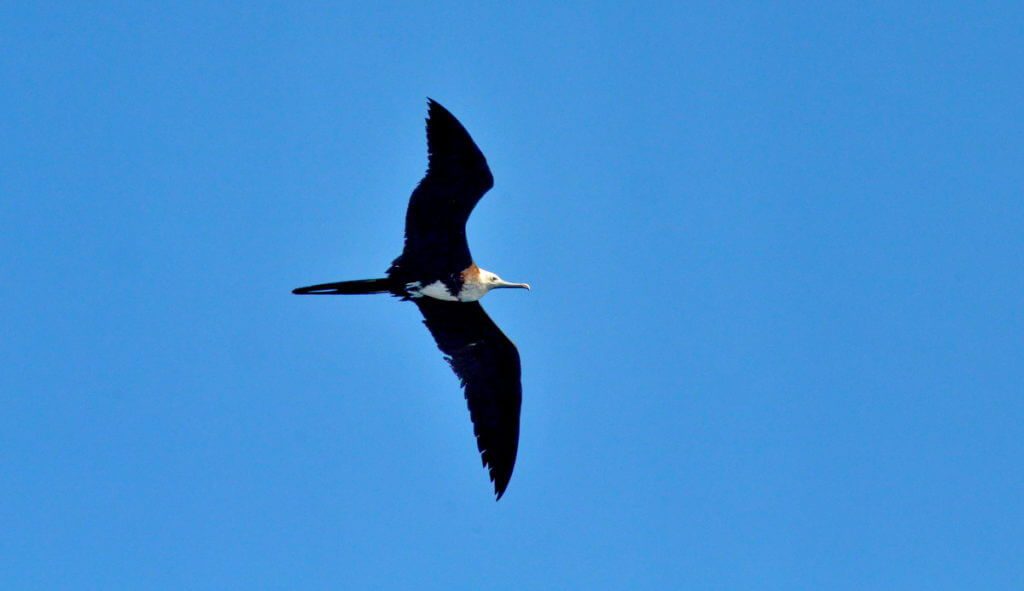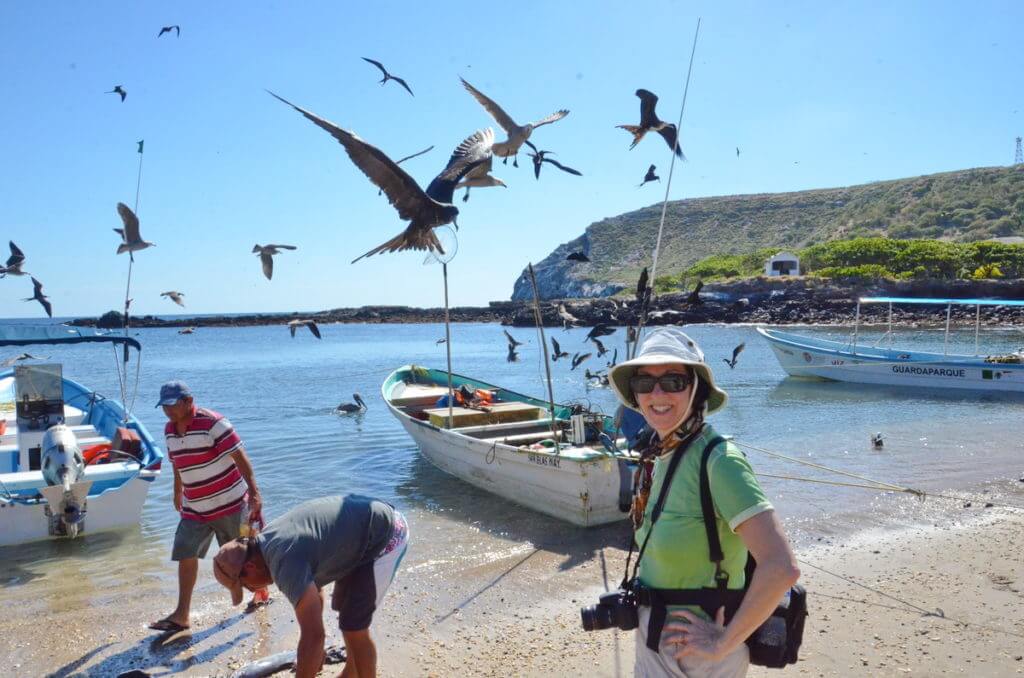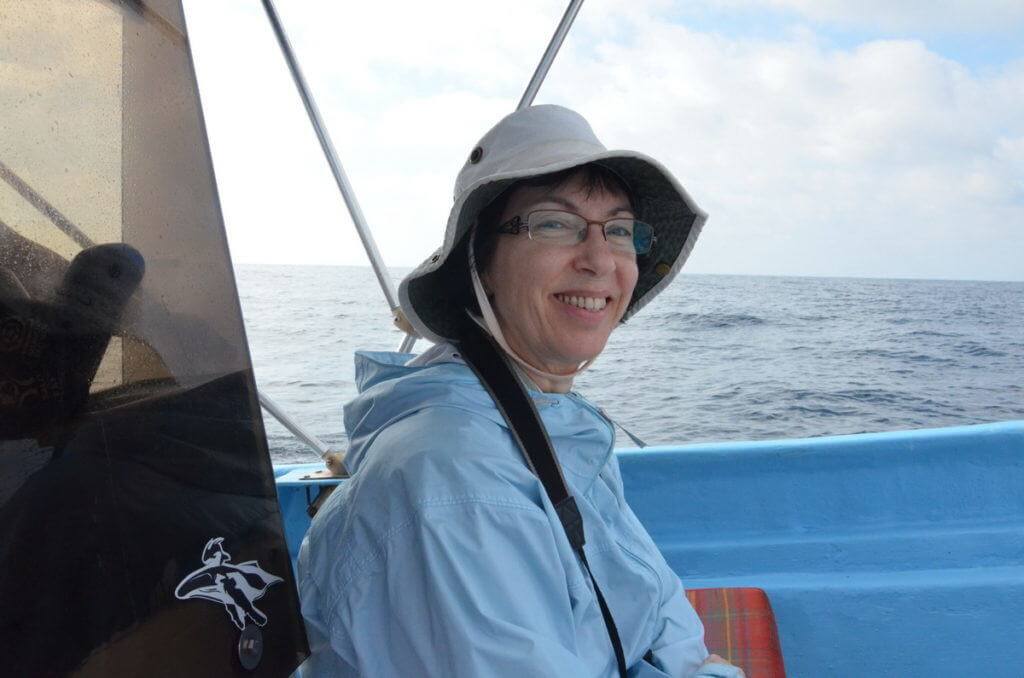Magnificent Frigatebirds On Mexico’s Isla Isabel
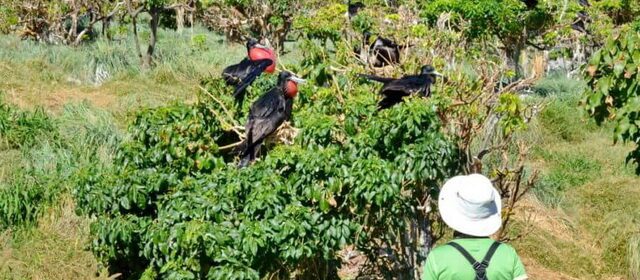
Bob and I could hardly wait to land at Isla Isabel. We were promised Blue-footed Boobies and Magnificent Frigatebirds with no fear of humans. Referred to as “North America’s Galapagos”, Isla Isabel lies about 43 miles northwest of San Blas on the Pacific Coast of Mexico.
Our day started at 4:30 a.m. in order to board our boat and get on the water at sunrise. The captain of our launch had already stowed provisions for the day, so with a 2 1/2 hour ride before us, we withdrew from San Blas just as it was stirring into wakefulness.
Adrenalin was coursing through my veins as we cruised along beneath an amber-coloured sky. Next thing you know, Bob and I were treated to a few Magnificent Frigatebirds flying overhead.
It was only moments later that we saw why. Fishermen in half a dozen boats were hauling in their catches. Swarmed by Brown Pelicans hoping for a free meal, the fishermen paid the birds no heed.
A couple of Magnificent Frigatebirds had scored a fish, but the subsequent jostling for possession of the tasty snack had the fish falling through the sky.
It was nice to have a few sights along the way because once we left the pangas behind, it was just us and the wide open Pacific Ocean for another couple of hours. Thinking we might have some food to spare, the odd Brown Pelican made a close flyby.
Ricardo and his first mate continuously scanned the ocean for things of interest. When he pointed out a giant Whale Shark, Bob and I were thrilled.
Whale Shark is the largest known fish species achieving lengths of up to 12.5 metres (41.5 feet) and weighing up to 21.5 metric tons (over 47,000 lbs)
This gentle giant is a filter-feeding fish. With its very large mouth, it filters plankton and small fish from the water. We lingered alongside the Whale Shark for a good 10-15 minutes as it made passes near the boat.
Finally, Isla Isabel was within our sights. We looked forward to our personal tour and getting a bit of exercise after sitting for so long. There are limitations on the number of visitors to the island each day, so we would be undisturbed.
As Ricardo made plans to drop anchor, we could already see scores of Magnificent Frigatebirds soaring over Playa Chica. Isla Isabel is a National Park and wildlife refuge that is populated with about 42,000 birds. Although the island is uninhabited, fishermen use the beach as a staging area before and after fishing trips.
The fishermen are prohibited from fishing in the waters directly off Isla Isabel, and we were happy to see a park ranger’s boat moored nearby.
When we set off to explore the hills, Bob and I had no idea just how marvelous our experience would be.
Right away, we were within sight of a group of Magnificent Frigatebirds in the long, dry grass. On rare occasions, these birds will nest on the ground if treetop locations are in short supply.
Continuing further afield, Ricardo led us to a colony of Magnificent Frigatebirds where a large number of them were roosting. Magnificent Frigatebirds prefer low-growing trees and shrubs in which to build their nests.
Before breeding begins, a male builds a display perch upon which he sits and shows off his physique while attempting to attract a mate. The telltale purple sheen on this male’s plumage is a diagnostic characteristic of a Magnificent Frigatebird.
Once a mate is found, a nest is built on the male’s display platform. Magnificent Frigatebirds establish dense colonies during breeding season and will pack multiple nests into a suitable tree. The nests are within pecking distance of one another.
With so many nests occupied, Bob and I saw a lot of Magnificent Frigatebirds defending their territories. They rattled and snapped their bills and also made feeble lunges at one another, but little to no damage was inflicted.
It was unbelievable having such a unique opportunity to closely observe these extraordinary birds, and they showed no sign of fear at our presence.
The spectacle of a male Magnificent Frigatebird with its red gular sac inflated is like nothing we had ever seen before.
The featherless skin stretches from the lower mandible to the neck, and the male puffs it up like a balloon when trying to attract a mate.
Magnificent Frigatebirds are the only seabird family wherein the female’s plumage differs from the male’s. A female Magnificent Frigatebird has a dark head and a white chest.
A juvenile Magnificent Frigatebird starts out with a white head that gradually turns darker. The pale tan stripe on this bird’s upper wing also denotes a young bird.
In drawing closer, Bob and I were excited to see some of the males displaying courtship behaviour.
The males gather in groups to court females, and in addition to inflating their prominent gular sacs, Magnificent Frigatebirds use several other techniques to gain the attention of the females. A male will clack its bill, sway its head, and call out to females flying overhead.
While sitting on his perching platform, a male will also vibrate his partially spread wings. There was lots of activity to keep us interested and entertained.
Magnificent Frigatebirds take flight in the afternoon when the winds and thermals are strongest, so there was a good number of females soaring above the colony and observing the males’ earnest attempts to be noticed.
After a female chooses a mate, the male brings sticks to her, and she adds to his display perch to make a flimsy, shallow platform that serves as the nest.
A male Frigatebird uses his long, sturdy beak to collect small twigs from bushes and trees, or he may steal materials from another male’s perch. It takes 13 days for a female to complete a nest. She then lays one egg.
Male Magnificent Frigatebirds also maintain an inflated gular sac during early incubation of the egg, but then it fades to pale orange and shrinks so that it is barely visible.
Both male and female Magnificent Frigatebirds incubate the egg, which takes 50-60 days to hatch. The male shares responsibility for feeding the nestling for about 4 weeks. We were lucky to espy one nest with a fairly recent hatchling.
A female Magnificent Frigatebird continues to nurture the baby on her own while the male goes off to molt before returning in the hopes of breeding again with a different mate.
A baby bird fledges the nest around 6 months of age, but it is often still being fed by the mother until it is one year old.
Bob and I did not spend very long with the Magnificent Frigatebirds, but the density of their colony made observing them and their behaviour quick and easy. Ricardo had plans for us to explore the rest of the island, so we left the colony by way of a “tunnel of trees”.
On the far side of Isla Isabel, we found the Blue-footed Booby nesting location, and keeping a keen eye on them was a collection of Magnificent Frigatebirds on cliffs overlooking the area.
Magnificent Frigatebirds use their impressive long bills with the hooked tip to effectively snatch fish out of the water as they skim over the surface. They will also pluck baby turtles and crabs from the ground and young birds out of nests, so the Blue-footed Boobies had a big job guarding their own breeding colony.
Magnificent Frigatebirds are, indeed, magnificent. These pterodactyl-like birds have a wingspan of over 7 feet and are between 3-4 feet long. Because their plumage is not waterproof, these birds do not dive for fish. Instead, they harass other birds and steal their food, even going so far as forcing them to regurgitate recently captured meals.
When our group returned to Playa Chica, we found that the fishermen had returned and were cleaning their catches. Seizing the opportunity for scraps tossed by the fishermen, Pelicans and Magnificent Frigatebirds descended in droves to fight over the bounty.
And then it was back onto the boat for our ride back to San Blas. First, however, we savoured freshly-prepared ceviche while watching Humpback Whales. They were breaching, much to our delight, and provided excellent lunchtime entertainment. What an amazing and rewarding day we had.
Frame To Frame – Bob and Jean

